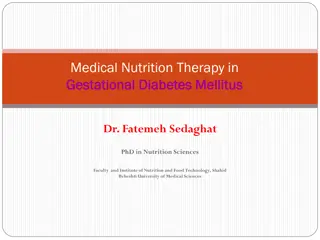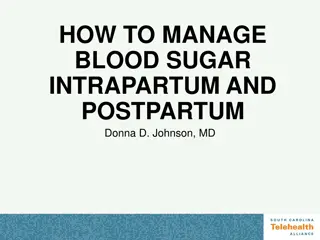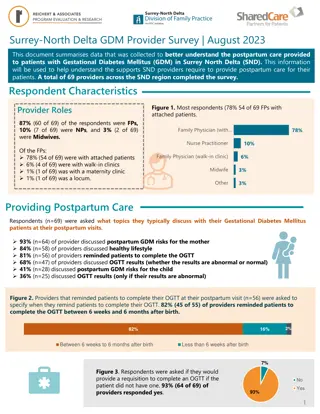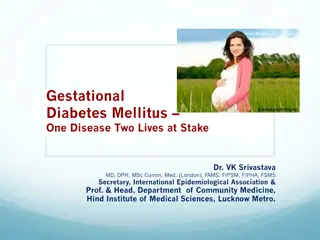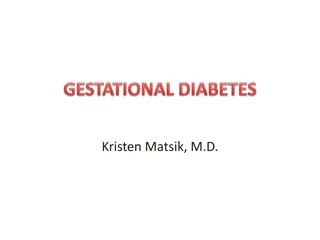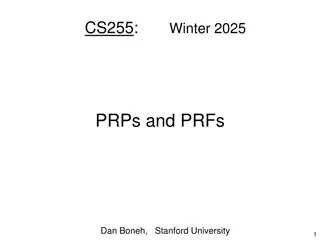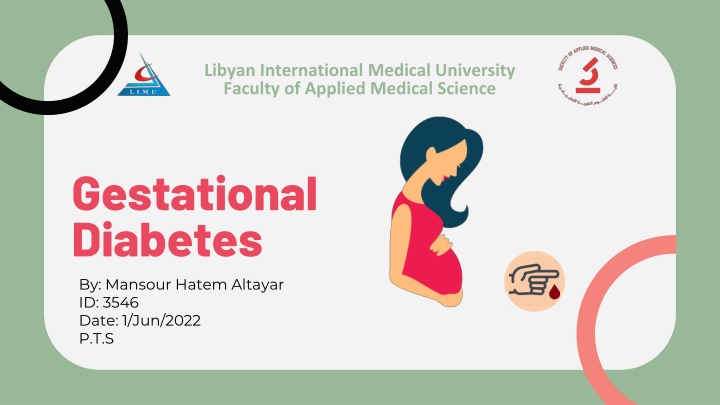
Gestational Diabetes: Risk Factors, Effects, and Management
Explore the prevalence, risk factors, and consequences of Gestational Diabetes Mellitus (GDM) in pregnant women. Learn about the impact on maternal and fetal health, along with strategies for clinical care and treatment. Discover key insights into GDM from the Libyan International Medical University Faculty of Applied Medical Science.
Download Presentation

Please find below an Image/Link to download the presentation.
The content on the website is provided AS IS for your information and personal use only. It may not be sold, licensed, or shared on other websites without obtaining consent from the author. If you encounter any issues during the download, it is possible that the publisher has removed the file from their server.
You are allowed to download the files provided on this website for personal or commercial use, subject to the condition that they are used lawfully. All files are the property of their respective owners.
The content on the website is provided AS IS for your information and personal use only. It may not be sold, licensed, or shared on other websites without obtaining consent from the author.
E N D
Presentation Transcript
Libyan International Medical University Faculty of Applied Medical Science Gestational Diabetes By: Mansour Hatem Altayar ID: 3546 Date: 1/Jun/2022 P.T.S
Introduction to GDM With the rising trend in obesity, the incidence of GDM, pregnancy complications and the long-term metabolic risks for the woman and the offspring, are also on the rise, GDM is prevalent and estimated to affect more than 20 million livebirths worldwide, more than 90% of cases are expected to occur in South Asia due to the lack of uniform strategies for screening and diagnosing. increasingly 3
Learning Objectives Define Gestational diabetes mellitus List the risk factors and consequences of GDM Discuss the clinical care and management of gestational diabetes 4
Gestational Diabetes Mellitus 02 5
Gestational Diabetes Mellitus GDM Is defined as glucose intolerance resulting in hyperglycemia that begins pregnancy. In most cases, this hyperglycemia is the result of impaired glucose tolerance due to pancreatic -cell dysfunction. or first diagnosed in 6
GDM Risk Factors and Affects03 7
GDM Risk Factors and Affects Risk factors: It includes: 1. Overweight/obesity 2. Excessive gestational weight gain 3. Westernized diet 4. Ethnicity 5. Genetic polymorphisms 6. Advanced maternal age 8
GDM Risk Factors and Affects 7. Intrauterine environment (low or high birthweight) 8. Family and personal history of GDM 9. Other diseases of insulin resistance, such as polycystic ovarian syndrome (PCOS) Each of these risk factors are either directly or indirectly associated with impaired -cell function and/or insulin sensitivity. 9
GDM Risk Factors and Affects Consequences in Mother: GDM increases the risk of a number of short-term and long-term maternal health issues: 1. Antenatal depression. 2. Pregnancy complications. 3. 60% of women with a past history of GDM develop T2DM later in life. 4. There is evidence suggests that the GDM will alter the vasculature of women permanently. 10
GDM Risk Factors and Affects Consequences in child: Also poses short- and long-term consequences for the infant: 1. Increase in placental transport of glucose, amino acids, and fatty acids 2. Excess fetal insulin production can stress the developing pancreatic -cells, contributing to -cell dysfunction and insulin resistance, even prenatally. 3. Macrosomia is also a risk factor for shoulder dystocia a form of obstructed labor. Thus, babies of GDM pregnancies are usually delivered by caesarean section. 11
GDM Risk Factors and Affects 4. Once delivered, these babies are at increased risk of hypoglycemia, which is likely due to formed dependence on maternal hyperglycemia (fetal hyperinsulinemia). 5. Contribute to brain injury if not properly managed. 6. There is evidence that GDM increases the risk of stillbirth. 7. In the long term, babies at risk of obesity, Type 2 Diabetes Mellitus, CVD and metabolic diseases 8. Childhood obesity and impaired glucose tolerance can be detected as young as five years old 9. Females are therefore more likely to experience GDM in their own pregnancies, contributing to a vicious intergenerational cycle of GDM. 12
GDM Care04 Management and Clinical 13
GDM Management and Clinical Care 1. Lifestyle Management and Glucose Monitoring 2. Pharmacologic Therapy 3. Antenatal Fetal Testing 4. Assessment of Fetal Growth 5. Timing of Delivery 6. Intrapartum Glucose Management 7. Postpartum Care 14
Conclusion GDM is defined as hyperglycemia caused by glucose intolerance that begins or is first diagnosed during pregnancy. Because it has various risk factors and implications, patients should be monitored, screened, and followed up on a regular basis to manage this type of pregnancy-related illness. 15
References Saravanan P; Diabetes in Pregnancy Working Group; Maternal Medicine Clinical Study Group; Royal College of Obstetricians and Gynaecologists, UK. Gestational diabetes: opportunities for improving maternal and child health. Lancet Diabetes Endocrinol. 2020;8(9):793-800. doi:10.1016/S2213-8587(20)30161-3. Lende M, Rijhsinghani A. Gestational Diabetes: Overview with Emphasis on Medical Management. Int J Environ Res Public Health. 2020;17(24):9573. Published 2020 Dec 21. doi:10.3390/ijerph17249573. - 1. O Sullivan, 1964 2. WHO, 1999 3. American Diabetes Association (ADA), 2004 4. IADPSG, 2010 5. National Institute for Health and Care Excellence (NICE), 2015 6. WHO, 2013 7. ADA, 2016. Plows JF, Stanley JL, Baker PN, Reynolds CM, Vickers MH. The Pathophysiology of Gestational Diabetes Mellitus. Int J Mol Sci. 2018;19(11):3342. doi:10.3390/ijms19113342. Mack LR, Tomich PG. Gestational Diabetes: Diagnosis, Classification, and Clinical Care. Obstet Gynecol Clin North Am. 2017;44(2):207-217. doi:10.1016/j.ogc.2017.02.002. Published 2018 Oct 26. 16
THANKS! Do you have any questions?


